The King's Speech
Friday, December 26, 2025
For those of us living in Spain—whether as long-term residents, retirees, or property owners—the King’s annual Christmas Eve address is more than just a tradition; it’s a barometer of the country’s social and political climate.

This year’s speech, delivered from the historic Hall of Columns in the Royal Palace, carried a particularly heavy weight. Marking the 50th anniversary of Spain’s transition to democracy, King Felipe VI used his 1,126-word address to deliver a "state of the union" that felt both like a warning and a rallying cry for stability.
Here are the key takeaways from the 2025 message and what they mean for the community here in Spain.
The buzzword of the night was convivencia (coexistence). The King was surprisingly blunt, describing Spain’s democratic harmony as a "fragile construct" rather than an "everlasting legacy."
For the expat community, this focus on stability is crucial. The King warned that polarisation and a "crisis of confidence" in institutions are the primary threats to the peace Spaniards have enjoyed for five decades. He urged political leaders to move away from dogmatism, famously stating:
"In a democracy, one’s own ideas can never be dogmas, nor can those of others be threats."
Breaking away from purely symbolic rhetoric, the King touched on the "daily weariness" (hastío) felt by many. He specifically highlighted three areas that resonate with everyone living in Spain right now:
-
The Housing Crisis: Acknowledged as the single biggest hurdle for the younger generation.
-
Cost of Living: A nod to the inflation and economic pressures hitting households across the peninsula.
-
Climate Change: Referenced as an "increasingly tragic factor," following the extreme weather events that have impacted regions like Valencia and Andalusia over the last year.
In what many political analysts see as a message to the nation’s feuding parties, the King called for exemplary conduct from public authorities. He positioned the Monarchy as a bridge, reminding the government and opposition alike that their first duty is to the citizens, not the "defeat of the other."
For foreign residents, this call for political maturity is a welcome one, as it signals a desire for a more predictable and stable business and social environment.
For the eagle-eyed viewers, the King delivered the speech while standing, a stylistic choice intended to show "gravity and proximity." He wore a dark blue suit with a terracotta-colored tie and, as is his custom, concluded by wishing everyone a Merry Christmas in Spain’s four co-official languages: Spanish, Catalan, Basque, and Galician.
As expected, the reactions were split down the middle. While the PSOE and PP (the mainstream parties) praised the King's call for unity, the further-left parties and separatist groups criticised the speech for not going far enough on social reform or historical grievances.
However, for the majority of us watching from our living rooms, the message was clear: Spain is at a crossroads at the half-century mark of its democracy, and the path forward requires a return to the spirit of consensus that built the modern nation.
 5
Like
Published at 5:04 PM Comments (0)
5
Like
Published at 5:04 PM Comments (0)
The Spanish Royal Family: A Brief History
Friday, May 12, 2023
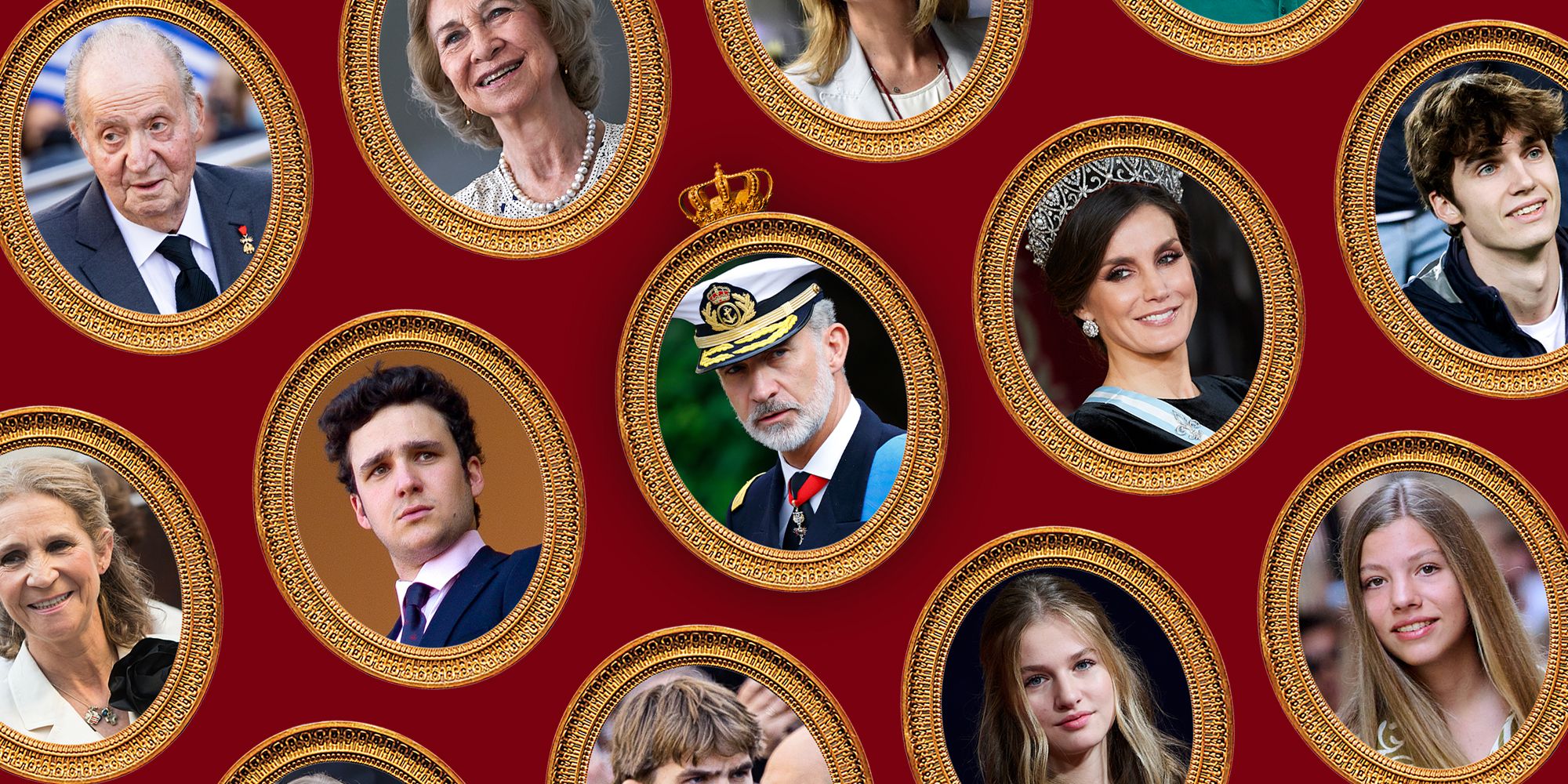
The Spanish Royal Family, also known as the House of Bourbon, has a rich and complex history that spans centuries. This brief overview will touch on key moments and figures in the family's history, from their rise to power to the present day.
Origins of the House of Bourbon
The House of Bourbon originated in France in the 13th century and became one of the most influential royal families in Europe. The Spanish branch of the Bourbon family began with Philip V, who became the King of Spain in 1700.

Philip V and the War of Spanish Succession
Philip V, the grandson of King Louis XIV of France, was named the heir to the Spanish throne by the dying King Charles II. This decision sparked the War of Spanish Succession (1701-1714) as European powers, including Austria, England, and the Dutch Republic, sought to prevent the union of the Spanish and French crowns. Ultimately, Philip V was able to maintain his claim to the Spanish throne, but with the condition that the French and Spanish crowns would never be united.
The Age of Enlightenment and the Bourbon Reforms
During the 18th century, the Spanish Bourbons implemented a series of reforms aimed at modernising Spain and its colonies. These reforms, known as the Bourbon Reforms, included efforts to strengthen the monarchy, centralize power, and improve the economy.
Charles III
Charles III (1759-1788) is considered one of the most successful Bourbon monarchs. He continued the Bourbon Reforms, promoted the arts and sciences, and sought to strengthen Spain's international standing.
The 19th Century: Turmoil and Instability
The 19th century was a tumultuous period for the Spanish monarchy, marked by wars, revolutions, and changes in government.
The Peninsular War and the Abdication of Charles IV
The Peninsular War (1808-1814) was a conflict between Napoleon's France and the allied powers of Spain, Britain, and Portugal. Charles IV was forced to abdicate in favor of his son, Ferdinand VII, but the Spanish monarchy was soon replaced by a French-controlled government.
The Restoration of the Bourbon Monarchy
After the fall of Napoleon, the monarchy was restored in Spain, with Ferdinand VII returning to the throne. However, his reign was marked by political instability and a struggle between absolutism and liberalism.
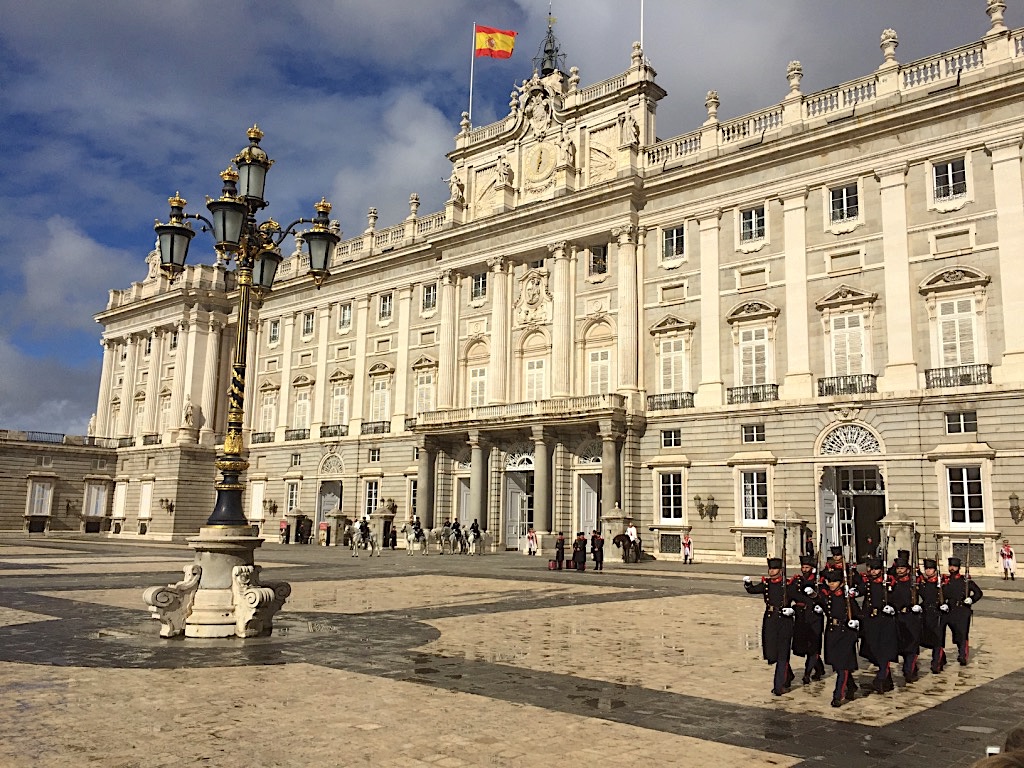
The 20th Century: The Second Spanish Republic and the Spanish Civil War
The early 20th century saw the establishment of the Second Spanish Republic (1931-1939), which sought to create a more democratic government. However, political tensions and divisions led to the Spanish Civil War (1936-1939), which ultimately resulted in the victory of General Francisco Franco and the establishment of a dictatorship.
The Restoration of the Monarchy and King Juan Carlos I
In 1975, following Franco's death, the monarchy was restored with King Juan Carlos I taking the throne. He played a crucial role in transitioning Spain to a parliamentary democracy and is credited with helping to stabilize the country during a turbulent period.
The Spanish Royal Family Today
Today, the Spanish Royal Family is led by King Felipe VI, who ascended to the throne in 2014 after the abdication of his father, King Juan Carlos I. The royal family, including Queen Letizia and their two daughters, Princess Leonor and Infanta Sofía, continue to play a significant role in representing Spain both nationally and internationally.
In conclusion, the Spanish Royal Family has experienced a long and complex history, marked by periods of both great achievement and significant turmoil. Through it all, the House of Bourbon has endured and continues to play an important role in Spain's national identity and political landscape.
 1
Like
Published at 10:16 PM Comments (0)
1
Like
Published at 10:16 PM Comments (0)
The Duchess of Alba’s Secret Will….
Thursday, January 8, 2015
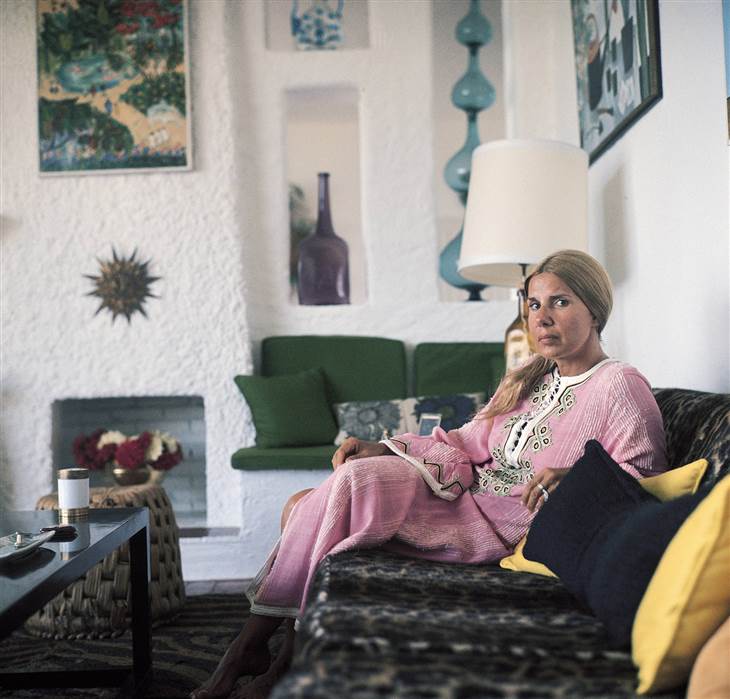
In 1973, Cayetana Fitz-James Stuart y Silva, the Duchess of Alba, walked into her Madrid notary’s office and handed him a sealed envelope. Alongside her were five witnesses.
The world’s most titled noblewoman said the envelope contained a will, but that it was not to be opened until after her death.
When the duchess passed away on November 20 of last year, her notary, Alberto Ballarín had already been retired for several years. But he had not forgotten about the will, and had prepared his successor Alfonso Madridejos to handle the matter.
The time has now come to reveal the contents of the sealed document drafted by one of Spain’s wealthiest individuals, whose assets may be worth as much as €3 billion.
Because this particular will was not drafted in the presence of a notary, it requires the mediation of a judge. Experts agree that while legal, this is a rare choice.
“To make a will and put it inside a sealed envelope without even telling your notary about the contents is a highly exceptional occurrence,” confirms Antonio Viejo, dean of Madrid’s judges. “The normal way of doing things is to go to the notary, describe your assets and state who the beneficiaries should be.”
Legally, a person’s last will revokes any earlier ones that may exist. At the time of her death, all of the duchess’s assets were in the names of her six children. But this mysterious document from the 1970s may contain important information, legal sources said – for instance new information that fills in gaps in the last known will, the existence of previously unknown assets, or new instructions that have not been revoked or that could complement others. “Now all that’s left to do is to wait to see what the duchess wanted 41 years ago, and what she didn’t want anyone to know until after her death,” said one source.
Some time before Christmas, Madridejos took the unopened envelope to Madrid’s central courthouse in Plaza de Castilla. Given the sensitive nature of the document and the duchess’s celebrity status, it was decided not to leave the envelope lying around with all the other cases waiting to be assigned a judge. A civil servant physically took the envelope to the courthouse that would be in charge of the matter to ensure that it was not misplaced or opened by inquisitive third parties.
The court, located in Plaza de los Cubos in central Madrid, has already located the five original witnesses, some of whom passed away years ago. Their handwriting may be analyzed by experts to ensure that they truly signed the will.
It is possible that the judge in charge of the case will hold a session to open the envelope some time later this month. Sources familiar with the case said the envelope is white and not very thick, suggesting it may contain four to five pages.
Concern over the contents of the will has extended to the aristocrat’s six children, whom she had with her first husband, Luis Martínez de Irujo, who died in 1972. Her descendants’ lawyers have already contacted the Madrid courthouse to express an interest in the matter....
 3
Like
Published at 4:46 PM Comments (5)
3
Like
Published at 4:46 PM Comments (5)
Prosecutor seeks 15 years for king’s brother-in-law
Wednesday, December 10, 2014
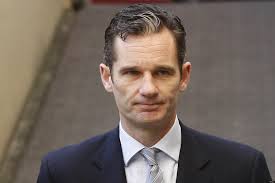 Iñaki Urdangarin, husband of Spanish royal Cristina de Borbón, is closer to standing trial over the Nóos case, which involves millions of euros in embezzled money earned through no-bid contracts with the regional governments of Valencia and the Balearics. Iñaki Urdangarin, husband of Spanish royal Cristina de Borbón, is closer to standing trial over the Nóos case, which involves millions of euros in embezzled money earned through no-bid contracts with the regional governments of Valencia and the Balearics.
The anti-corruption attorney, Pedro Horrach, has put together a 500-page document that lays the blame for Nóos on King Felipe VI’s brother-in-law and acquits Cristina of any criminal wrongdoing.
The report, which investigating judge José Castro will receive on Tuesday, asks for prison terms of 15 years for Urdangarin and 11 years for Jaume Matas, former premier of the Balearic Islands, under whose government the public contracts were awarded.
The judge will now have to dissect the report before deciding whether to also put Cristina de Borbón on trial for alleged tax evasion and money laundering through a front company in which she and her husband were partners.
Horrach and Castro had a public fallout over the princess’s role in the affair; the former has always defended her innocence, while the latter forced Cristina to answer questions in court in February of this year, an unprecedented situation for a member of Spain’s royal family.
Urdangarin created the Nóos Institute in 1999 with his partner Diego Torres, who had been one of his teachers at Madrid’s ESADE business school and is now also a target in the investigation. The non-profit entity was set up as a consulting group and began organizing sporting events and tourism conferences for the Balearic Islands and Valencia regional governments after winning no-bid contracts.
Urdangarin faces eight criminal charges, including embezzling around €6 million in public money. The trial is scheduled to begin a year from now.
The investigation began in 2010 as an offshoot of the Palma Arena case involving a sports arena built over budget by the government of Jaume Matas.
 1
Like
Published at 11:46 AM Comments (0)
1
Like
Published at 11:46 AM Comments (0)
The Duchess of Alba, an Unconventional Aristocrat.
Wednesday, November 26, 2014
Cayetana Fitz-James Stuart y Silva, the Duchess of Alba, has died at the age of 88 in Seville.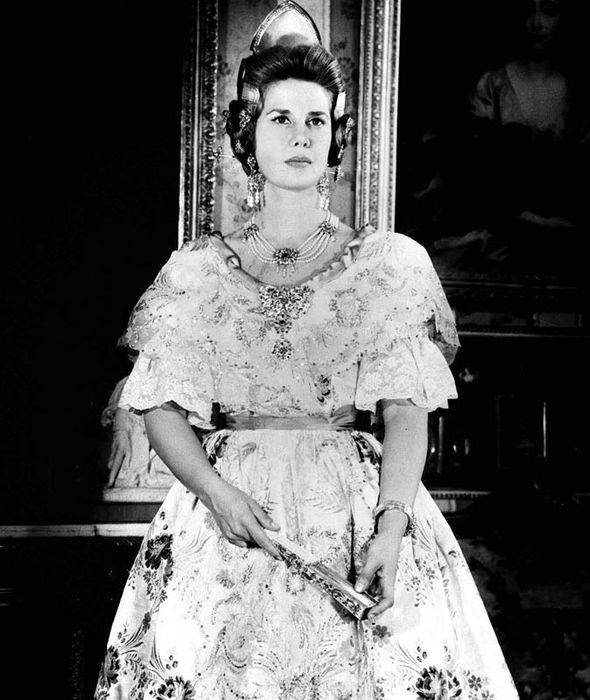
The holder of 14 Grandezas de España titles, the highest rank in Spanish nobility, she was the head of the House of Alba and a well-known society figure. But, above all, she was a unique, incomparable individual who left no one indifferent.
Though born in Madrid’s Liria Palace, she always enjoyed stepping out on to the street and challenging convention. And she did so until the end of her days, marrying for the third time just three years ago.
“If I don’t poke my nose into anyone else’s life, they shouldn’t poke their nose into mine,” she argued ahead of marrying Alfonso Díez, with whom she celebrated her third wedding anniversary on October 5. Her children initially opposed the union but everything changed when the House of Alba estate was settled and the details of how all its assets, businesses, land and properties – worth over €3 billion – were to be shared out was laid down in writing, along with the fact that the latest Duke of Alba would renounce almost everything. There is a saying that the Duchess of Alba, is she desired, could walk from Southern Spain to Northern Spain without ever walking on public land.
Cayetana de Alba chose to divide her inheritance unequally between her six children – Carlos, Alfonso, Jacobo, Fernando, Cayetano and Eugenia – all born from her marriage to Luis Martínez de Irujo. The two eldest, Carlos and Alfonso, are left in charge of the House of Alba Foundation, obliged to preserve and maintain its historical legacy.
Maintaining the House of Alba legacy was one of the duchess’s greatest concerns. Her big supporter in this task was her second husband, Jesús Aguirre, who restored part of the art collection in collaboration with Rafael Alonso of the Prado Museum, which since 1978 has taken on the task of looking after the House’s great works.
Besides their estates, the Alba family owns one of the finest and largest art collections in private Spanish hands, reaching back five centuries to the origins of the family. It also includes Impressionist paintings and other works acquired far more recently by the duchess herself.
Much of the collection sits in the Liria Palace in Madrid. It includes historic books and documents, most notably Christopher Columbus’s first map of the Americas. As part of Spain’s national patrimony, the collection could not be divested by the duchess or her heirs without the Culture Ministry’s permission.
She was born at Liria Palace on 28 March 1926, as the only child of the 17th Duke of Alba (a prominent politician and diplomat during the 1930s and 1940s), and his wife, María del Rosario de Silva y Gurtubay, 9th Marchioness of San Vicente del Barco. Her godmother was the Queen Consort of Spain, Victoria Eugenie of Battenberg, King of Spain Alfonso XIII de Borbón’s wife.
The matriarch’s senior title was Duchess of Alba, but she had more than 40 others. According to Guinness World Records, she had more titles than any other noble in the world.
Through the male-preference primogeniture from James FitzJames, she also claimed the title of Duchess of Berwick. She was a direct descendant of King James II of England, through his illegitimate son James FitzJames, 1st Duke of Berwick by his mistress Arabella Churchill.
She was said to be one of two main contenders from the Stuart dynasty, whose Scottish monarchs transformed the country during their time in power.
The Duchess of Alba might have argued she had the strongest claim. During the Scottish referendum, First Minister Alex Salmond always insisted that Queen Elizabeth II would remain as head of state after a Yes vote but others were not so sure. Some Scots looked back fondly in the history books to their Stuart kings, the first of whom was Robert II in 1371.
By the 17th century, they ruled all of England, Wales, Ireland and Scotland. In 1603, James VI of Scotland became James I in London, unifying the two crowns. His son Charles I was executed and Charles II ascended to the thrones after Oliver Cromwell’s inter-regnum. Charles II’s brother, Roman Catholic James II, then ruled until the Glorious Revolution saw him depart the British Isles.
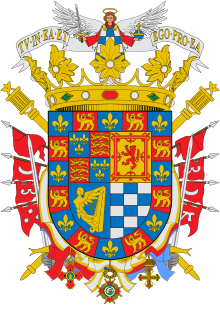
The last Stuart monarch was Queen Anne, who died childless in 1714.
The Crown passed to the House of Hanover, but the Stuart line continued abroad...
Titles :
Dukedoms
18th Duchess of Alba, Grandee of Spain
15th Duchess of Aliaga, Grandee of Spain -Ceded to her son Don Alfonso
13th Duke of Almazán, Grandee of Spain -obtained in 2013
4th Duchess of Arjona, Grandee of Spain -Ceded to her son Don Cayetano
11th Duchess of Berwick, Grandee of Spain (Jacobite Peerage)
17th Duchess of Híjar, Grandee of Spain -Ceded to her son Don Alfonso
11th Duchess of Liria and Jérica, Grandee of Spain
11th Duchess of Montoro, Grandee of Spain -Ceded to her daughter Doña Eugenia
Count-Dukedoms
12th Countess-Duchess of Olivares, Grandee of Spain
Marquessates
17th Marquise of the Carpio, Grandee of Spain
10th Marquise of San Vicente del Barco, Grandee of Spain -Ceded to her son Don Fernando
16th Marquise of La Algaba
16th Marquise of Almenara -Ceded to her son Don Alfonso
18th Marquise of Barcarrota
10th Marquise of Castañeda
23rd Marquise of Coria
14th Marquise of Eliche
16th Marquise of Mirallo
20th Marquise of la Mota
20th Marquise of Moya
17th Marquise of Orani -Ceded to her son Don Alfonso
12th Marquise of Osera
14th Marquise of San Leonardo
19th Marquise of Sarria
12th Marquise of Tarazona
15th Marquise of Valdunquillo
18th Marquise of Villanueva del Fresno
17th Marquise of Villanueva del Río
Countcies
27th Countess of Aranda, Grandee of Spain -Ceded to her son Don Alfonso
22nd Countess of Lemos, Grandee of Spain
20th Countess of Lerín, Grandee of Spain, Constabless of Navarre
20th Countess of Miranda del Castañar, Grandee of Spain
16th Countess of Monterrey, Grandee of Spain
20th Countess of Osorno, Grandee of Spain
18th Countess of Palma del Río, Grandee of Spain -Ceded to her son Don Alfonso
12th Countess of Salvatierra, Grandee of Spain -Ceded to her son Don Cayetano
22nd Countess of Siruela, Grandee of Spain -Ceded to her son Don Jacobo
19th Countess of Andrade
14th Countess of Ayala
16th Countess of Casarrubios del Monte
16th Countess of Fuentes de Valdepero
11th Countess of Fuentidueña
17th Countess of Galve
18th Countess of Gelves
16th Countess of Guimerá -Ceded to her son Don Alfonso
21st Countess of Modica (Kingdom of Sicily)
24th Countess of Ribadeo -Ceded to her son Don Alfonso
25th Countess of San Esteban de Gormaz
12th Countess of Santa Cruz de la Sierra
20th Countess of Villalba
Viscountcies
12th Viscountess of la Calzada
Honours
Dame Grand Cross of the Civil Order of Alphonso X the Wise (14 December 2001).
Dame Grand Cross of the Civil Order of Agricultural Merit (29 March 1974)
Dame Grand Cross of the Royal Order of Isabella the Catholic (1 April 1964)
Dame Grand Cross of the Civil Order of Charity (5 April 1962)
Dame Grand Cross of the Order of Beneficence (1962).
Dame Grand Cross of Justice of the Sacred Military Constantinian Order of Saint George (1961).
Honorary appointments
Constable of Aragon
Dame of the Royal Cavalry Armory of Seville
Honorary Mayor of Liria (Madrid)
Honorary President of the Opera Philharmonic
Honorary President of the Spanish Red Cross
Marshal of Castilla
Member of the Hispanic Society of America, New York
Member of Merit of the Royal Hispanic-American Academy of Arts, Sciences and Letters of Cádiz
 3
Like
Published at 11:42 AM Comments (2)
3
Like
Published at 11:42 AM Comments (2)
The unyielding Cristina of Borbón
Thursday, June 26, 2014
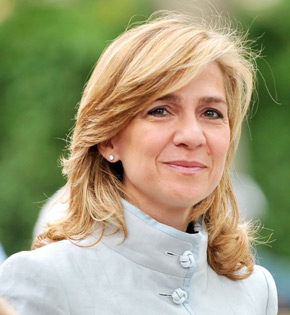 For a long time, Cristina of Borbón represented the modern side of Spain’s royal family. Born in 1965, she was the first female Spanish royal to earn a university degree (in political science); in 1991 she told reporters that she would marry for love and that her husband would be a normal, uncomplicated man; in 1992 she shared a Barcelona apartment with a girlfriend from her sailing circle; and in 1993 she started working for bank La Caixa on a monthly salary of €1,200. For a long time, Cristina of Borbón represented the modern side of Spain’s royal family. Born in 1965, she was the first female Spanish royal to earn a university degree (in political science); in 1991 she told reporters that she would marry for love and that her husband would be a normal, uncomplicated man; in 1992 she shared a Barcelona apartment with a girlfriend from her sailing circle; and in 1993 she started working for bank La Caixa on a monthly salary of €1,200.
The most independent member of Spain’s royal family was also one of its most beloved. The day she married Olympic handball player Iñaki Urdangarin in Barcelona, 200,000 people came out to applaud as the new Duke and Duchess of Palma went by. That was in October 1997.
Fifteen years later, “popular indignation” led the city of Palma de Mallorca to change the sign on a street that had been named in their honor: it is now known simply as La Rambla. The title of the Duke and Duchess of Palma had been a surprise wedding gift from Cristina’s father, King Juan Carlos.
Once in high demand to hand out prizes at ceremonies, attend public events and represent the Spanish Crown, Cristina sealed her own fate when she decided to remain loyal to her husband after he had morphed from a perfect son-in-law to a “toxic man” following the Nóos scandal.
They met in the summer of 1996, at an event organized by the Spanish Olympic Committee, and announced their engagement on April 30, 1997, after a nine-month relationship. Back then, Cristina was earning 200,000 pesetas (€1,202) a month at La Caixa, while Urdangarin had an annual salary of 10 million pesetas (€60,101) as a handball player for the Barcelona team. The 30-year-old sportsman was also completing a degree in business administration and seemed concerned about his job prospects.
But his lifestyle began experiencing exponential growth. In 2004, after taking out a loan from La Caixa and borrowing €1.2 million from Juan Carlos, the couple bought a luxury mansion in the exclusive Barcelona neighborhood of Pedralbes for €6 million. Refurbishing the place allegedly cost an additional €3 million.
So what happened in between this period of making ends meet and the luxury home? Urdangarin did a master’s degree at the Esade business school in Madrid, where he met Diego Torres, his future business partner and the man who ultimately dragged Cristina de Borbón into a courthouse. At the height of the Nóos scandal, in March 2012, Torres became furious when Urdangarin’s lawyer objected to dropping Torres’ wife from the investigation. In revenge, he gave investigators reams of personal email exchanges containing compromising information relating to Urdangarin and his wife.
But not even this made Cristina distance herself an inch from her husband. She never offered to file for divorce or renounce her theoretical rights to the throne, even though surveys kept showing that the Nóos case was severely eroding the monarchy’s good standing.
The king’s public apology for his elephant-hunting expedition to Botswana went some way towards lifting the Crown’s popularity ratings again, but public support has yet to return to pre-Nóos levels.
The Infanta is sixth in line to the throne, so renouncing her rights would have no practical consequences. It would not even affect her children, who would climb one rung in the succession ladder. Yet she never made such a gesture to her father, and neither did he ask for it. It remains to be seen whether she will offer it to the new king, her brother Felipe VI, depending on how her legal situation develops.
In any case, the Duke and Duchess of Palma have not appreciated the isolation tactics implemented by the former head of the Royal Household, Rafael Spottorno, in an effort to protect the king and the monarchy. Both Cristina and her husband viewed the strategy as an advance condemnation of their own persons. Then again, they never thought things would ever go this far.
Cristina was removed from the official royal schedule in October 2011, and did not even attend her father’s abdication ceremony or her brother’s coronation last week. Even though the two siblings had been very close, Felipe has avoided being seen in public with Cristina ever since the Nóos scandal broke.
The princess was convinced that she had become a scapegoat. The lawyer her father hired as her defense attorney, Miquel Roca, one of the founding fathers of the Spanish Constitution, quickly announced an appeal when the judge in charge of the case summoned her for questioning a second time. But the royal family convinced Cristina that it would be in her own best interest to give testimony, cut “the torture” short, and avail herself of this last chance to send out the message that she was cooperating with the justice system.
Finally, on February 8, the Infanta was forced to head down the “slope of shame” that leads into the Palma courthouse, although she covered the distance in a car. Once inside, she gave evidence as an official suspect in a tax fraud and money laundering investigation in connection with her husband’s questionable sources of funding through the Nóos Institute.
Nobody from the royal family was there with her, just her lawyers, who had trained her for something that no monarch’s child is ever trained to do: provide explanations.
“I trusted my husband,” was the phrase she repeated many times over in her court statement. But she failed to convince Judge Castro. “The endless resorting to the claim of ignorance and faulty recollection” shown by Cristina throughout the session made the magistrate decide not to drop the investigation against her. “Whether the explanation for this attitude resided in the trust, veneration or love that she professed for her husband is not for me to judge,” added Castro.
But sources at La Zarzuela, the royal residence, are blaming the stubborness of a woman in love for the decline in the monarchy’s popularity ratings, and for the first shadow cast over Spain’s new king.
 1
Like
Published at 3:05 PM Comments (0)
1
Like
Published at 3:05 PM Comments (0)
Felipe VI becomes the new king of Spain
Thursday, June 19, 2014
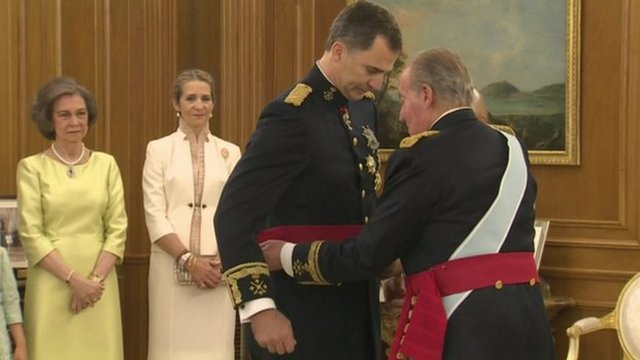
Felipe VI is the new king of Spain. Juan Carlos’s son legally took over as the country’s new monarch at midnight when the abdication law signed on Wednesday came into force.
The low-key ceremony to proclaim Felipe king began at 9.30am on Thursday, when Juan Carlos presented him with the sash of the commander-in chief of the armed forces, a position held by the head of state as per the Spanish Constitution.
After the ceremonial act at La Zarzuela palace, the royal residence, father and son embraced each other and the new monarch greeted his wife, Queen Letizia, and his daughters Leonor, the new Princess of Asturias, and Sofía.
At 10am, a motorcade left the palace for Congress, in downtown Madrid, where the actual coronation ceremony was to take place in recognition of the fact that Spain is a constitutional monarchy.
Amid heavy security measures, a black Rolls-Royce took the new monarchs and their daughters to the lower house of parliament, where 325 deputies, 259 senators and other elected officials awaited them.
The new royals arrived at Congress three minutes before 10.30am, where they stood on a red dais to listen to a live rendition of the Spanish national anthem before moving inside the building. Felipe VI stood at attention with Queen Letizia standing to his left and their two young daughters to his right.
Felipe VI then inspected the troops standing in formation on the Carrera de San Jerónimo. Afterwards, the royal family walked up the steps to cries of “Felipe! Felipe!” from the crowd gathered outside Congress and waving Spanish flags. A standing ovation awaited them inside the lower house, after which Congress speaker Jesús Posadas delivered a speech.
Posadas had words of gratitude for the 39 years of service given by Juan Carlos’ wife, Queen Sofía, who held back tears as she received a standing ovation of her own while her eldest daughter Elena stood by her side.
Juan Carlos had chosen not to be in Congress so as not to take the focus away from his son.
There was no actual crowning per se – no Spanish monarch has used a crown since the days of the Catholic monarchs – but rather a solemn proclamation. At 10.47am, a serious-looking Felipe VI took his oath, Posadas proclaimed him king, and Congress cried out “Viva el rey! Viva España!” as the national anthem was played again.
Felipe then took to the stand to deliver his first speech as Spain’s new king, describing his reign as “a renewed monarchy for new times.”
Speaking about the unity but also the plurality of Spain, in recognition of regions where separatist sentiment is high such as Catalonia and the Basque Country, the king underscored his respect for the Constitution and said that “the reign of a constitutional king is now getting underway.”
Felipe VI went on to express his desire to become a symbol of national unity. “The parliamentary monarchy can and must continue to provide a fundamental service [to the nation],” he said.
Since his father Juan Carlos announced his abdication earlier this month, there have been strong displays of republican sentiment in many Spanish cities, including Madrid.
“The Crown must constantly earn citizens’ appreciation, respect and trust,” Felipe said.
Spain’s new king also acknowledged the economic crisis and the widespread disaffection for politicians. “Today, more than ever, citizens are rightly demanding that public officials lead by example,” he said.
Calling for a renewed spirit of governance based on the best interest of Spaniards, Felipe VI said “today I would like for us to look forward to the future.”
King Felipe ended his speech with a quote from Don Quixote: “A man is not worth more than another man if he does not do more than him” and hoped that Spaniards would feel proud of his own day-to-day work. He then thanked his audience in Castilian Spanish, Catalan, Basque and Galician.
 2
Like
Published at 3:01 PM Comments (8)
2
Like
Published at 3:01 PM Comments (8)
Coronation without presence of foreign royals
Thursday, June 12, 2014
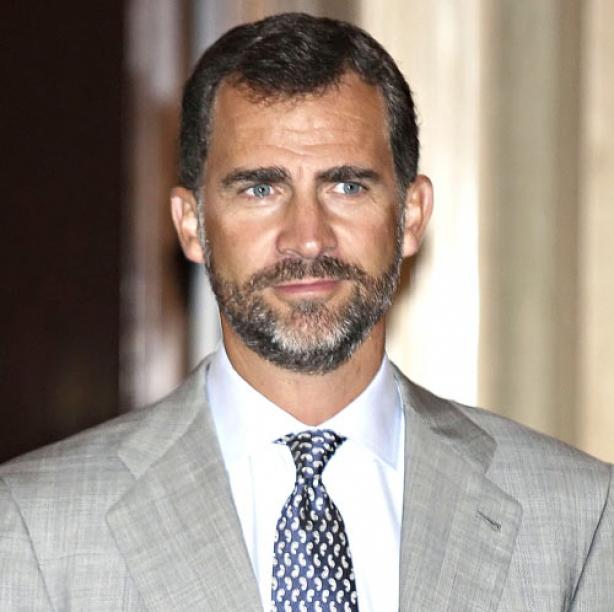 Not one representative of other European royal families, nor any foreign heads of state, will attend the coronation ceremony of Felipe VI, which will take place on June 19 in a joint session in Spain’s Congress and Senate in Madrid. “We have very little time, and there is no room in the benches of the lower chamber,” explained a Royal Household spokesperson on Thursday. “We aren’t going to make people come just to leave them outside.” Not one representative of other European royal families, nor any foreign heads of state, will attend the coronation ceremony of Felipe VI, which will take place on June 19 in a joint session in Spain’s Congress and Senate in Madrid. “We have very little time, and there is no room in the benches of the lower chamber,” explained a Royal Household spokesperson on Thursday. “We aren’t going to make people come just to leave them outside.”
Nor will there be a Mass after the ceremony, as was the case when Juan Carlos I was sworn in as king in 1975. There will, however, be military honors outside Congress, and Felipe VI will attend the ceremony in his military uniform, given that when he is crowned king he will automatically become the leader of Spain’s armed forces, as established by the Constitution.
The Zarzuela Royal Palace has yet to confirm which members of the Spanish royal family will be present at the June 19 ceremony. Nor have they confirmed whether the current king and queen will attend. There is intense media interest as to whether the king’s daughter, Cristina, and her husband, Iñaki Urdangarin, will be present, given that both are currently caught up in a corruption scandal relating to the king’s son-in-law’s business affairs.
The palace has justified the vagueness of the details concerning the ceremony given the lack of precedent. “With the abdication, all we had in the Constitution were two lines of text,” a spokesman said. “The only abdication was that of Felipe V [in 1724], and that didn’t last long – his son died eight months later.”
On the day of his coronation, Felipe VI will read a speech that will set the tone and the agenda for his reign. According to the Royal Household, Congressional speaker Jesús Posada is likely to read another speech beforehand.
After he becomes king, Felipe VI is expected to begin a presentation tour around Spain and several countries abroad. He will be accompanied by Princess Letizia, and is likely to visit Morocco, France and Portugal first.
 2
Like
Published at 4:19 PM Comments (0)
2
Like
Published at 4:19 PM Comments (0)
Shortly, The Crown Princess of Spain
Tuesday, June 10, 2014
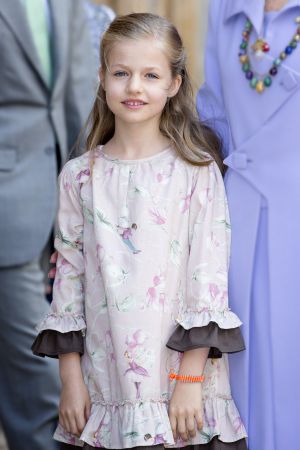
The explanations began on the day that Leonor de Borbón y Ortiz asked: “Why do people take so many pictures of us?”
That is when Felipe and Letizia told Leonor that her grandparents were the king and queen of Spain.
It was reportedly harder for her mother to answer the next question: “So what do you do for a living?” The reply was: “I work for Spain, to improve the country.”
And so at the age of eight, Leonor already knows that she is part of the royal family and that one day, she too will be queen of Spain.
On the day that her father becomes king, Leonor will become the heir to the throne and bear the title of Princess of Asturias. When she turns 18, she will swear to uphold the Spanish Constitution, as her father did before her.
Unlike other royal families in Europe, the Spanish monarchy still preserves an old law that favors male descendants over female ones in the line to the throne. This means that if a baby boy were born to Felipe and Letizia, he would skip ahead of his sisters to become the crown prince – unless the Constitution were to be changed.
But it seems unlikely that Letizia has any further plans for motherhood.
On May 2, when Juan Carlos’ decision to abdicate was still under wraps, Leonor attended her first official act at the San Javier airbase in Murcia. Her presence there was no coincidence. Sources at the royal residence, La Zarzuela, said that this marks the beginning of Leonor’s public life.
For now, though, her parents want her to keep a low profile. “She’ll have time enough for all of that,” said Don Felipe on one occasion.
But things are happening fast all of a sudden. Leonor is expected to be there at the ceremony that will turn her father into Felipe VI.
The infanta is about to finishthe third grade at a secular private school, Nuestra Señora de los Rosales, where monthly student fees are €700. Leonor’s younger sister Sofía also attends this school.
They say that Leonor is an attentive student, who takes ballet lessons and is studying the history of the Bourbons, the dynasty to which she belongs. In future, she will receive some military training to prepare her for her role as chief of the armed forces. She is also expected to study abroad for a while, as her father did in Canada.
The royal palace will not provide any more details about plans for Leonor, insisting on the need to protect the child’s privacy as far as is possible.
Physically, Leonor is a lot like her grandmother, Queen Sofía, at the same age. She is an earnest child who likes to observe things around her and makes sure that her little sister is obedient at all times. In private she is said to be more restless and witty. A Spanish scientist once revealed a now-famous anecdote told to him by Letizia, in which Leonor said to her sister: “Eat your vegetables – they contain anti-oxidants.”
“They are very well-behaved little girls,” say sources at the palace who are in touch with the family on a daily basis. Just as Letizia places high demands on herself, she also places them on her children.
Nearly two years ago, King Juan Carlos expressed a desire to have his picture taken with his son and eldest granddaughter at the palace gardens. This photograph, which illustrates the family’s dynastic lineage, was there in the background when the king announced his abdication on Monday.
The youngest, Sofía, was reportedly jealous that she was not allowed to pose with “Grandpa.” In the end, Juan Carlos had another picture taken in which Sofía was included, but that shot remains in the family’s private photo album. The portrait of Spain’s future monarchy is clear.
 1
Like
Published at 1:34 PM Comments (0)
1
Like
Published at 1:34 PM Comments (0)
A middle-class queen
Tuesday, June 10, 2014
If she had not married the man she did, Letizia Ortiz Rocasolano might have spent Monday morning covering the news story live herself.
But the monarch who has just abdicated happens to be her father-in-law, and has been for the last decade, ever since she married Prince Felipe on May 22, 2004.
Letizia, a former journalist, no longer covers the news. Rather, she is in the news herself: the gossip magazines and television talk shows are forever discussing her choice of clothes, shoes and hairdos, analyzing her thinness and debating her outbursts and nocturnal jaunts.
But the picture of Letizia that has emerged from other media reports is one of increasing self-reliance and greater spontaneity than is customary among royal families.
Letizia, 41, has kept her own agenda since 2007, and her activities include support for victims of rare diseases and cooperation with the World Health Organization on nutrition issues.
Other personal habits have introduced a touch of the middle class into the Spanish monarchy: it is not difficult to find the princess sitting inside one of the cinemas showing original-version movies in Madrid’s Plaza de los Cubos, going to indie music concerts, or attending the capital’s annual Book Fair in jeans (though she gets a private visit).
The princess thinks, and (here is the real news) sometimes says what she thinks. As her own confidence in her tasks has grown with the years, so has her critical spirit come to the fore.
“It is not the same calling it aid or calling it a bailout; it is not the same calling it a recession or calling it negative growth; it is not the same calling it restructuring or calling it cuts,” she said a year ago at a language seminar in San Millán de la Cogolla (La Rioja). It was the kind of liberty that Queen Sofía, Juan Carlos’ wife, would never have taken.
But Letizia has the unprejudiced gaze of a perfect representative of the middle class – someone who has traveled on the subway, taken out a mortgage to buy an apartment in a Madrid suburb, and brought emotional baggage to the relationship (in 1998 she had married her former high-school literature teacher; the couple were divorced a year later).
When she married the crown prince, Letizia Ortiz gave up a journalism career that had taken off in 2003, when she became the host of the primetime newscast on state broadcaster TVE. She covered the 9/11 terrorist attacks, the Iraq invasion and the sinking of the Prestige oil tanker off the coast of Galicia. Her father was a journalist, as was her grandmother. She studied journalism at Complutense University in Madrid and worked on a PhD in Mexico. She dabbled in print journalism for a while, but broadcast work was her thing.
When she met Felipe at a dinner party at the home of a fellow TVE worker, Letizia’s career was on the rise. In 2000 she had received an award for journalists under the age of 30 from the Madrid Press Association.
So it was not just the crown prince who had to seriously ponder the consequences of marrying a woman who was a stranger to aristocratic circles; Letizia also had to assess what she would lose and what she would gain from taking the step. Everyone says theirs was a marriage of love, and certainly the pictures of the couple always display their tenderness toward each other.
Over the course of a decade, the princess has had to deal with the death of her sister Erika and the Nóos corruption scandal affecting other members of the royal household. But there has also been the birth of her daughters Leonor and Sofía. Letizia has tried to create normal living conditions: she and Felipe take their kids to school and put them to bed at night themselves. Their house, a residence built in 2000 known as the Prince’s Pavilion, is an attempt to bring some warmth into the coldness of the royal residence. It is likely that once they become King Felipe VI and Queen Letizia, they will keep on living there.
 1
Like
Published at 10:32 AM Comments (0)
1
Like
Published at 10:32 AM Comments (0)
Spam post or Abuse? Please let us know
|
|